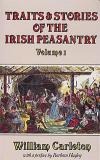Research History
The research tradition at Maynooth University traces its roots to the first Professors of the Royal College of St Patrick, founded in 1795. Those early scholars had escaped persecution in continental Europe and brought with them the traditions of inquiry and independence that remain a feature of research at Maynooth University today. The history of research and scholarship at Maynooth is a story that grew from those modest beginnings in the 18th Century. It shows the strong scholarly connections with St. Patrick’s College and demonstrates how the scholarly discourse of the present day can be traced back over two centuries.
Maynooth University ’s current expertise in
Mathematics, Communications and Computation is founded on our pioneering work in the early 19
th Century. The induction coil, a type of electrical transformer was invented at Maynooth by
Professor Nicholas Callan (1799-1864), considered by many to be Ireland’s greatest scientific inventor. His work in 1836 built on the observations of Michael Faraday concerning electricity. Induction coils were subsequently used by Hertz to demonstrate electromagnetic radiation and are still used as components of the ignition system for many motor vehicles.
The need to produce reliable batteries for his research in electromagnetism spurred Callan to invent the "Maynooth Battery" in 1854, and a single fluid cell in 1855. Previous batteries had used expensive platinum or unsatisfactory carbon as components. Although cumbersome by today’s standards, the Maynooth Battery can claim to be the world’s first battery amenable to mass production and a forerunner of the batteries that power modern consumer devices.
Maynooth University ’s research expertise in
Human Health can also be traced back to the 19
th Century.
Sir Dominic Corrigan (1802-1880), the son of a local agricultural salesman, studied in Maynooth and went on to become a leading medical practitioner of the “Dublin School”. He held the post of “Physician to the College” and became a dedicated champion of Dublin’s poorest residents. Unfortunately, most of his warnings preceding the Great Famine were ignored or dismissed as alarmist. In 1859 Dominic Corrigan became the first Catholic to be elected president of the Royal College of Physicians in Ireland, and was also President of the Dublin Zoological Society and the Dublin Pharmaceutical Society. A pioneer of the stethoscope, his observations of heart disease among the Dublin poor allowed him to identify the “collapsing” pulse of aortic valve insufficiency- a sign still termed “Corrigan’s pulse”.
Maynooth University ’s present research theme in Humanities in Practice: Sources, Resources & Discourses flows from the 19th century when Humanities research at Maynooth, was exemplified by Charles W. Russell (1812-1880), a prolific scholar in many disciplines. He is remembered internationally for his work on historical source materials such as the Carte Manuscripts in Oxford’s Bodleian Library, and for his work in opening the Vatican Archives as a resource for international scholarship. In Ireland, he became an editor and manager of the Dublin Review and he was a founding member of the Historic Manuscripts Commission (1869). The Russell Library at Maynooth University is named in his honour.
There have been many illustrious contributors from Maynooth to scholarship in
Human Cultures, Experience & Creativity over the last two centuries; however
Professor Barbara Hayley (1938-91) merits special attention. She was a renowned literary scholar of the pre-Yeatsian literary revival and in particular the work of
William Carleton. Her work led to a re-evaluation of Carleton and indeed allowed a broader re-evaluation of Anglo-Irish literature in the period. An authoritative scholar on 19
th century periodicals, she was the first woman to hold the Chair of English at Maynooth University. Nationally, Prof Hayley was a celebrated critic and broadcaster and served on committees of the Royal Irish Academy and as secretary for the committee for Anglo-Irish Literature, activities that reflected her passionate advocacy for the central role of the Arts in Irish cultural life.
If you would like to find out more about our research history, why not visit the largest collection of scientific instrumentation on public display in Ireland covering Physics, Chemistry and Surveying at the The National Science Museum, St Patrick’s College, Maynooth




